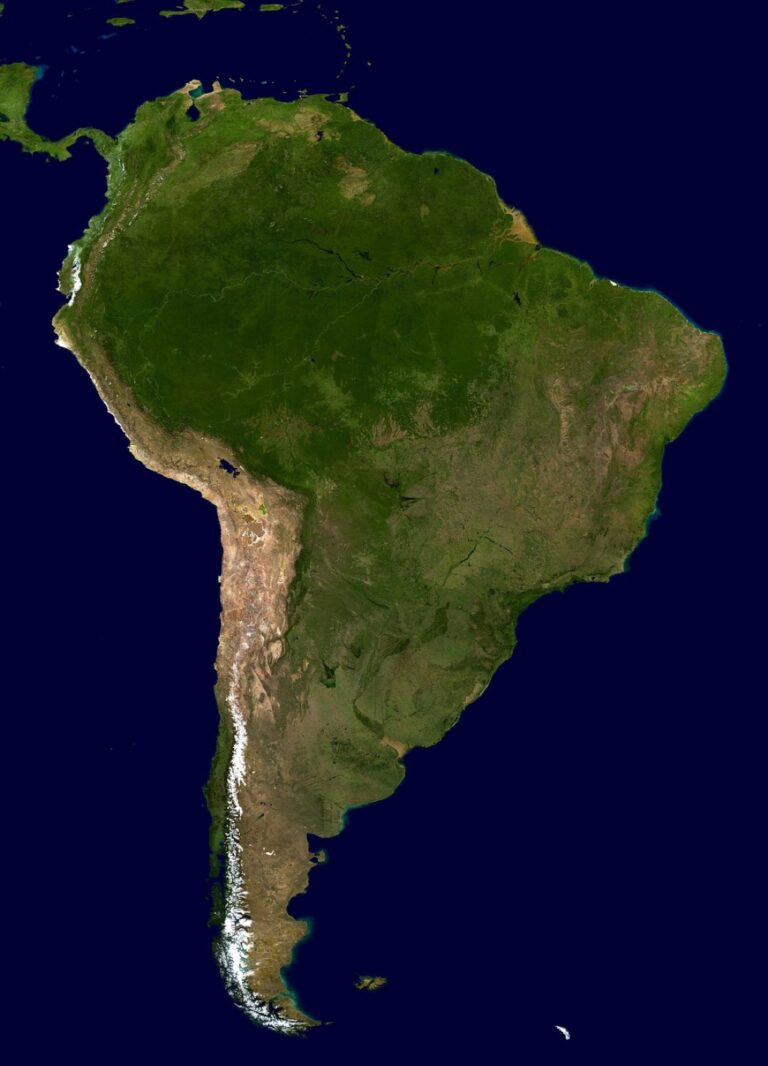6 Ethical Considerations in Map Design That Create Fair Maps
Why it matters: Every map you create shapes how people understand and navigate the world around them. Your design choices — from color schemes to data representation — carry profound ethical implications that can influence public policy reinforce stereotypes or even endanger communities.
The big picture: Map designers wield unprecedented power in our data-driven society where geographic visualizations guide everything from urban planning to resource allocation. Understanding these ethical responsibilities isn’t just about creating better maps — it’s about building a more equitable world through thoughtful design.
Disclosure: As an Amazon Associate, this site earns from qualifying purchases. Thank you!
Accuracy and Truthfulness in Geographic Representation
Your commitment to accurate geographic representation forms the foundation of ethical cartography. Every projection choice and data point you include shapes how viewers understand spatial relationships and make decisions based on your maps.
Achieve a flawless, even complexion with e.l.f. Flawless Satin Foundation. This lightweight, vegan formula provides medium coverage and a semi-matte finish for all-day wear, while hydrating your skin with glycerin.
Avoiding Misleading Projections and Distortions
Choose projections that serve your map’s purpose rather than defaulting to familiar options like Web Mercator for printed materials. The Mercator projection dramatically distorts landmass sizes at higher latitudes, making Greenland appear larger than Africa when Africa is actually 14 times bigger. Consider equal-area projections like Mollweide or Albers for thematic maps showing statistical data, and conformal projections like Lambert Conformal Conic for navigation purposes. Document your projection choice and explain significant distortions in your map notes.
Ensuring Data Integrity and Source Verification
Verify data currency and methodology before incorporating any dataset into your cartographic work. Cross-reference government databases, academic institutions, and reputable organizations like the US Geological Survey or OpenStreetMap contributors. Check collection dates, sampling methods, and potential biases in your source materials. Maintain detailed metadata records including data lineage, accuracy assessments, and processing steps you’ve applied. Always cite authoritative sources and avoid using outdated census data or unverified crowdsourced information for critical applications like emergency planning or infrastructure development.
Maintaining Scale Consistency and Proportional Relationships
Establish clear scale relationships throughout your map design to prevent misinterpretation of spatial data. Use consistent symbol scaling where doubling a data value doubles the symbol area, not the radius or height. Apply the same classification methods and break points across multiple maps in a series. Avoid mixing scales within single map layouts unless clearly labeled with separate scale bars. Test your proportional symbols by calculating actual ratios between the largest and smallest values, ensuring they match your intended visual hierarchy and remain readable at your target output size.
Cultural Sensitivity and Indigenous Rights Recognition
Map design intersects with cultural heritage and indigenous sovereignty in ways that require careful consideration of historical context and contemporary rights.
Respecting Traditional Place Names and Territories
Traditional place names carry deep cultural significance that contemporary maps often overlook or replace with colonial designations. You should prioritize indigenous toponyms alongside or instead of imposed names when creating culturally sensitive maps. Research authentic spellings through tribal language departments and cultural centers rather than relying on anglicized versions. Include dual naming systems that acknowledge both traditional and contemporary designations. Verify pronunciation guides and cultural context before incorporating indigenous place names into your cartographic work.
Acknowledging Sacred Sites and Cultural Boundaries
Sacred sites require special consideration in mapping projects since their exposure can lead to vandalism or inappropriate access. You must distinguish between publicly accessible cultural sites and those requiring protection from general visibility. Consult with tribal authorities about appropriate representation levels for ceremonial grounds, burial sites, and other culturally sensitive locations. Consider using generalized boundaries rather than precise coordinates for sacred areas. Implement different symbology that respects cultural protocols while still acknowledging the significance of these spaces in your geographic representations.
Collaborating with Local Communities in Mapping Projects
Community collaboration ensures your maps serve local needs while respecting cultural protocols and knowledge systems. You should establish formal partnerships with tribal councils, cultural committees, and community leaders before beginning mapping projects in indigenous territories. Incorporate traditional ecological knowledge and local spatial understanding into your cartographic framework. Share draft maps with community stakeholders for review and revision before publication. Develop data-sharing agreements that respect community ownership of cultural information and ensure appropriate attribution in all mapping outputs.
Privacy Protection and Data Security Measures
Personal location data carries inherent risks that require careful consideration in ethical map design. Your approach to data security directly impacts user trust and community safety.
Safeguarding Personal Location Information
Protect individual privacy by avoiding the display of precise location data that could identify specific users or households. You’ll need to aggregate movement patterns rather than showing individual tracks or routes. Consider using heat maps instead of point data when displaying activity concentrations. Remove metadata from user-generated content that contains timestamps, device identifiers, or precise coordinates. Store location data with restricted access protocols and implement automatic deletion schedules for sensitive information.
Implementing Anonymization Techniques for Sensitive Data
Apply spatial generalization to reduce location precision while maintaining analytical value for your maps. You can use grid-based aggregation methods that group data into larger geographic units like census blocks or custom polygons. Implement k-anonymity standards that ensure each data point represents at least k individuals to prevent re-identification. Add controlled noise to datasets through differential privacy techniques when displaying population-sensitive information. Blur boundaries around sensitive facilities like schools, hospitals, or government buildings to protect operational security.
Establishing Clear Data Usage Policies and Consent Protocols
Create transparent data collection notices that explain what location information you’re gathering and how you’ll use it in your mapping projects. You must obtain explicit consent before collecting personal location data from users or community members. Document data retention periods and provide clear opt-out mechanisms for individuals who want their information removed. Establish protocols for sharing anonymized data with research partners or government agencies. Maintain audit trails that track who accesses location data and when modifications occur to ensure accountability in your mapping workflows.
Bias Elimination and Inclusive Representation
Eliminating bias in map design requires systematic evaluation of your feature selection, representation methods, and visual choices. Your cartographic decisions directly influence how communities perceive themselves and how others view different neighborhoods, cultures, and socioeconomic groups.
Addressing Cartographic Bias in Feature Selection
Feature selection bias occurs when you prioritize certain types of infrastructure or landmarks over others. You’ll often find maps that prominently display affluent neighborhoods’ amenities while omitting essential services in underserved areas. Combat this by establishing consistent criteria for feature inclusion across all mapped regions. Include community centers, places of worship, and local businesses equally regardless of neighborhood demographics. Verify your data sources represent all communities fairly rather than reflecting the reporting biases of certain databases or government records.
Ensuring Equal Representation of All Communities
Equal representation means allocating visual space and detail proportionally across all mapped communities. You should avoid the common practice of providing high-resolution imagery and detailed street networks only for wealthy districts while showing sparse detail in lower-income areas. Standardize your level of detail across neighborhoods and ensure consistent labeling practices. Include multilingual place names when serving diverse communities and represent housing types beyond single-family homes. Your symbol hierarchy shouldn’t inadvertently prioritize commercial districts over residential areas where people actually live.
Avoiding Stereotypical Symbols and Visual Elements
Stereotypical symbols reinforce harmful assumptions about communities and their characteristics. You must eliminate culturally insensitive icons that reduce complex neighborhoods to oversimplified visual clichés. Avoid using symbols that suggest danger, poverty, or cultural stereotypes when representing certain areas. Instead, develop neutral iconography that focuses on actual infrastructure and services. Test your visual elements with community representatives before publication and consider how color choices might carry unintended cultural or socioeconomic implications. Your symbol library should represent the full spectrum of community assets without perpetuating visual bias.
Accessibility and Universal Design Principles
Creating inclusive maps that serve all users regardless of physical abilities represents a fundamental ethical responsibility in modern cartography. Universal design principles ensure your geographic visualizations remain functional and meaningful for diverse audiences with varying accessibility needs.
Creating Maps for Users with Visual Impairments
Design maps with tactile elements and high contrast ratios exceeding WCAG 2.1 AA standards of 4.5:1 for normal text and 3:1 for large text. Implement texture patterns and raised symbols that provide spatial information through touch, particularly for printed materials. Use distinct line weights and pattern fills instead of relying solely on color differences to convey categorical data. Screen reader compatibility requires proper markup structure with semantic HTML elements and logical tab order navigation for interactive web maps.
Implementing Color-Blind Friendly Design Choices
Select color palettes that remain distinguishable across deuteranopia, protanopia, and tritanopia color vision deficiencies affecting approximately 8% of men and 0.5% of women globally. Use tools like ColorBrewer 2.0 or Viz Palette to test your color schemes against various forms of color blindness. Avoid problematic red-green combinations and supplement color coding with patterns, symbols, or direct labeling. Implement sufficient luminance contrast between adjacent colors and provide redundant encoding through shape, size, or texture variations alongside chromatic differences.
Providing Alternative Text and Audio Descriptions
Write comprehensive alt text descriptions that convey spatial relationships, data patterns, and key geographic insights rather than simply listing map contents. Structure audio descriptions to guide users through map elements in logical geographic or hierarchical order, starting with orientation and scale information. Include sonification techniques for interactive maps, using audio cues like pitch variations to represent elevation changes or data intensity. Provide downloadable data tables as CSV files containing the same information displayed visually, ensuring screen readers can access quantitative geographic data effectively.
Protect your eyes with RaoOG blue light blocking reading glasses. Featuring flexible spring hinges for a comfortable fit and accurate magnification for clear, distortion-free vision.
Environmental and Social Impact Considerations
Your mapping activities extend beyond data visualization to influence real-world environmental and social outcomes. These considerations require proactive planning to minimize negative impacts while maximizing community benefits.
Minimizing Ecological Disruption from Mapping Activities
Field mapping operations can damage sensitive ecosystems if you don’t follow proper protocols. You’ll need to stay on designated trails during ground truthing activities and avoid disturbing wildlife habitats during breeding seasons. Remote sensing technologies like LiDAR and satellite imagery reduce the need for extensive field surveys in fragile areas. Coordinate with environmental agencies before accessing protected lands, and always follow Leave No Trace principles. Consider using existing survey data from government databases or academic research to minimize additional ecological impact from your mapping projects.
Considering Long-term Community Effects of Map Publication
Published maps can alter community dynamics through increased tourism, development pressure, or unwanted attention to previously quiet areas. You must evaluate how your maps might affect local housing costs, traffic patterns, and resource availability. Consult with community leaders before releasing detailed recreational or cultural maps that could lead to overcrowding. Consider publishing maps with intentionally reduced precision for sensitive locations like swimming holes or archaeological sites. Document community feedback during your planning process and establish protocols for map updates based on observed social impacts after publication.
Navigate international business with ease using The Culture Map. Understand cultural differences and improve communication for successful global collaborations.
Promoting Sustainable Cartographic Practices
Sustainable cartography reduces environmental costs through digital-first workflows and cloud-based collaboration tools. You should prioritize paperless production methods using platforms like ArcGIS Online or QGIS Cloud to minimize printing waste. Choose renewable energy-powered servers for map hosting and storage when possible. Implement version control systems to prevent duplicate data processing and reduce computational resources. Design maps for digital consumption with responsive layouts that work across devices, reducing the need for multiple format versions. Archive completed projects using efficient file formats and compression techniques to minimize long-term storage requirements.
Conclusion
As a map designer you hold significant responsibility for shaping how communities understand and interact with their geographic environment. Your design choices directly influence public policy decisions resource allocation and community development patterns.
The ethical principles outlined here aren’t just theoretical guidelines—they’re practical tools that help you create more accurate inclusive and responsible geographic visualizations. When you prioritize cultural sensitivity eliminate bias and ensure accessibility you’re contributing to a more equitable society.
Your commitment to these ethical standards will ultimately determine whether your maps serve as bridges that connect communities or barriers that divide them. The choice to design ethically isn’t just about following best practices—it’s about recognizing the profound impact your work has on real people’s lives.
Frequently Asked Questions
What makes map design ethically important?
Map design is ethically important because it significantly influences how people perceive and navigate their environment. Design choices like color schemes and data representation can affect public policy, reinforce stereotypes, and potentially endanger communities. In our data-driven society, geographic visualizations play crucial roles in urban planning and resource allocation, giving map designers substantial power and responsibility to foster equity through thoughtful design.
How can map designers ensure accuracy in their geographic representations?
Map designers can ensure accuracy by committing to truthful data representation and using appropriate projections. They should avoid misleading projections like Web Mercator that distort landmass sizes, instead choosing equal-area or conformal projections based on purpose. Essential practices include verifying data sources, maintaining detailed metadata, ensuring scale consistency, and preventing misinterpretation of spatial data to enhance visualization reliability and effectiveness.
Why is cultural sensitivity important in cartography?
Cultural sensitivity in cartography is crucial for respecting indigenous rights and traditional knowledge. This includes honoring traditional place names alongside colonial designations, acknowledging sacred sites and cultural boundaries, and consulting with tribal authorities. Map designers should collaborate with local communities, tribal councils, and cultural committees to ensure maps reflect local needs, respect cultural protocols, and incorporate traditional ecological knowledge for meaningful representations.
What privacy protection measures should map designers implement?
Map designers should protect privacy by avoiding precise location data that could identify individuals, using aggregated movement patterns and heat maps instead. Key techniques include spatial generalization, differential privacy for data anonymization, and establishing clear data usage policies. Essential practices include transparent data collection notices, explicit consent protocols, maintaining audit trails for accountability, and implementing security measures to enhance user trust and community safety.
How can map designers eliminate bias in their work?
Map designers can eliminate bias through systematic evaluation of feature selection, representation methods, and visual choices. This includes ensuring essential services in underserved areas are represented, establishing consistent criteria for feature inclusion, providing equal visual space and detail across all communities, and avoiding stereotypical symbols. Designers should develop neutral iconography, test visual elements with community representatives, and avoid prioritizing affluent neighborhoods over others.
What accessibility principles should be followed in map design?
Accessible map design should follow universal design principles to accommodate users with varying abilities. For visual impairments, use tactile elements, high contrast ratios, and screen reader compatibility. Implement color-blind friendly palettes with distinguishable colors and supplementary patterns or labels. Provide alternative text and audio descriptions for geographic visualizations. These strategies ensure maps are functional and meaningful for all users, fulfilling ethical cartographic responsibilities.
How can mapping activities minimize environmental and social impact?
Mapping activities can minimize impact through proactive planning and sustainable practices. Use remote sensing technologies to reduce field surveys in sensitive areas and minimize ecological disruption. Consult community leaders about potential impacts on local dynamics like housing costs and resource availability. Implement sustainable cartographic practices including digital-first workflows and renewable energy-powered servers to reduce environmental costs while maximizing community benefits.








